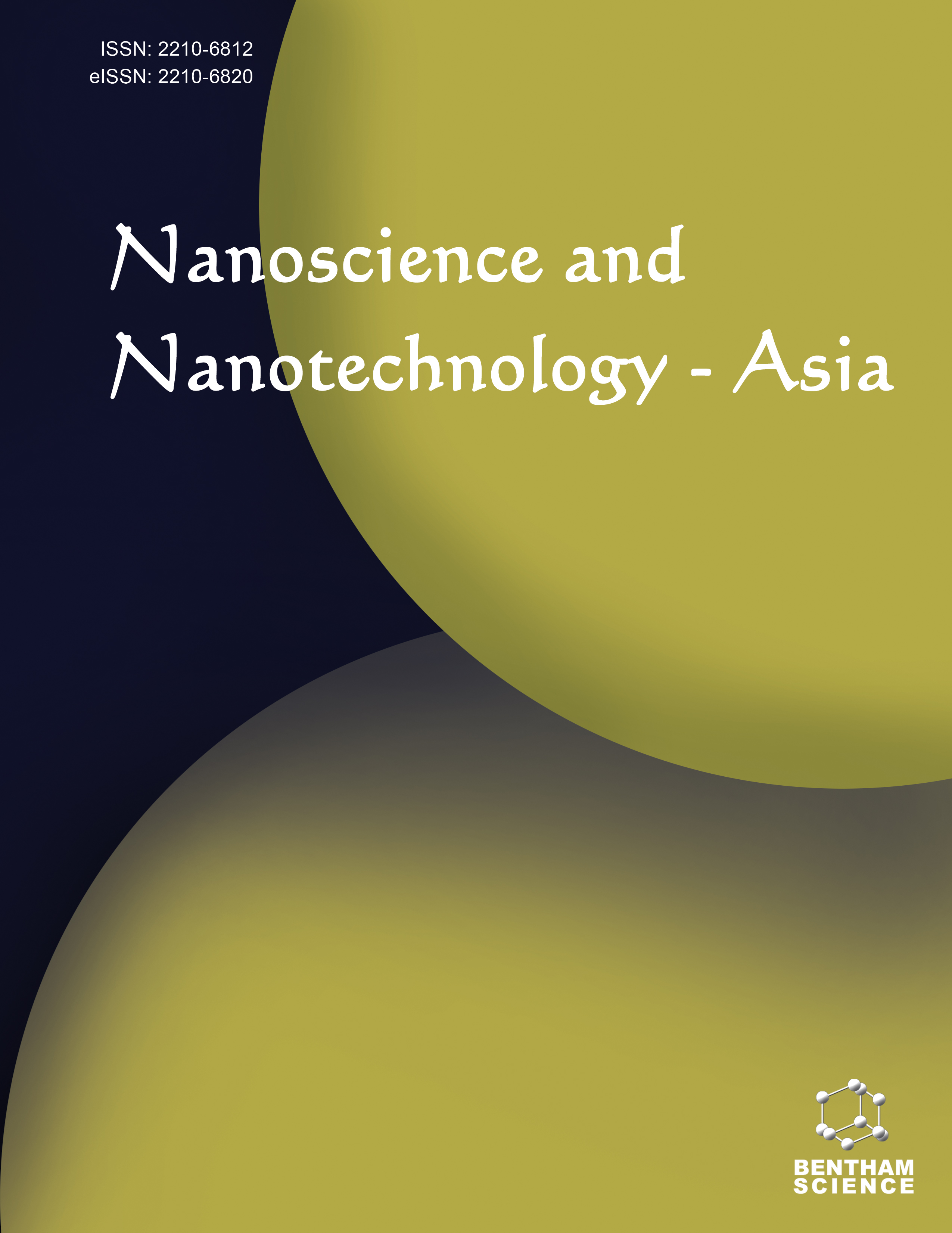- Home
- A-Z Publications
- Nanoscience & Nanotechnology-Asia
- Previous Issues
- Volume 12, Issue 5, 2022
Nanoscience & Nanotechnology-Asia - Volume 12, Issue 5, 2022
Volume 12, Issue 5, 2022
-
-
Nanostructured Lipid Carriers: New Insight for Cancer Therapy
More LessAuthors: Vidya Sabale and Manasi JiwankarCancer is a life-threatening disease that is associated with persistent tissue injury and uncontrolled cell growth. The treatments available to treat cancer include chemotherapy, surgery, and radiation therapy. These treatments are utilized in combination, while the most preferred treatment is chemotherapy. Because of the non-specificity of anticancer drugs, they kill healthy cells along with cancer cells, which lead to severe sid Read More
-
-
-
Fabrication and Self-cleaning Performance of RGO/(Si, Mo)-codoped TiO2 Thin Films for Architecture Environment Decontamination Application
More LessBackground: Self-cleaning is a potential technique in architecture environmental decontamination. Objective: The fabrication and self-cleaning property enhancement of the TiO2 hybridizing reduced graphene oxide (RGO) and codoping Si and Mo are reported. Methods: The films were deposited by a sol-gel dip-coating process. The self-cleaning properties were characterized by photocatalytic activity, photoinduced supe Read More
-
-
-
Heavy Metal Removal with NanoTiO2/Chitosan Modified Poly(Vinylidene Chloride)
More LessBackground: Heavy metal contamination of water resources has been identified as one of the most serious environmental issues. Chemical modification of hydrophobic polymer matrices is another approach for changing their surface properties for water treatment. The addition of nanoparticles to polymers alters surface characteristics such as adsorption capacity, adhesion, catalytic ability, and wettability to heavy Read More
-
-
-
Versatile Applications of Nanotechnology-based Electronic Nose
More LessAuthors: Shwetha M, Agnishwar Girigoswami, Deepika B, Gopikrishna A and Koyeli GirigoswamiBackground: In recent years, electronic noses have emerged as a component of nanotechnology- based technologies to meet various demands in the health sciences. Objective: To have a detailed idea regarding the various uses of electronic noses in the early detection of diseases, food spoilage, etc., we need to explore multiple studies. Methods: Electronic noses are the foundation for the development of biosensors, whi Read More
-
-
-
Dielectric Properties and Phase Transitions of KNO3 Embedded in Porous Aluminum Oxide
More LessBackground: The research of nanocomposites based on ferroelectrics has been recently stimulated by the discovery of a number of their unique properties. These properties are of particular interest from both fundamental and applied points of view. Objective: This paper presents the results of comparative studies of the linear and nonlinear dielectric properties of potassium nitrate embedded from the solution and from the Read More
-
-
-
Development, Characterization and In vivo Pharmacokinetic Studies of Olmesartan Medoxomil Nanosuspension for the Effective Treatment of Hypertension
More LessAuthors: Udit N. Singh, Bhargav E, Haranath C, Chitra Sekhar C, Charitha B and MV JyothiIntroduction: The present work aims to increase the saturation solubility and the bioavailability of Olmesartan medoxomil (OM) via an acid-base neutralization-based nanosuspension technique. Methods: The initial screening studies revealed that changes in the concentration of HPMC E15 (100-200 mg), mechanical stirring speed (SS) (900-1200 rpm) and stirring time (ST) (60-120 min) affected the responses. Effects produc Read More
-
Volumes & issues
Most Read This Month
Article
content/journals/nanoasi
Journal
10
5
false
en


